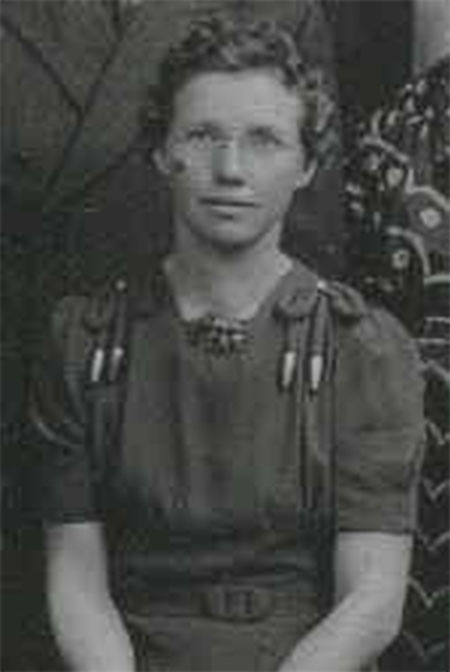Putting Down Roots

Perpetua Hutmacher Binstock
Despite assistance from the Russian army, the Germans faced many of the same conditions faced by homesteaders in the U.S. Many did not have farming experience and this new Russian land was more arid and with fewer trees. They adapted by learning how to build stone slab houses from the local Ukrainians.
Like their counterparts in the U.S. 100 years later, the first generation of immigrants had a difficult life. Their only options were to figure out how to survive or die. They were able to help and support one another through trying times by working as a community.
Unlike homesteaders in the U.S., however, Germans immigrating to Russia did not have to live in isolation. They arrived in groups of about 50 families and lived in a central location or town, farming the land surrounding them.
The Hutmachers Immigration to Russia
By Perpetua Hutmacher Binstock and son Norbert Binstock
The Hutmachers, along with many thousands of other Germans, packed up their meager belongings and left for Russia in 1809, for they had nothing to gain by remaining in their homeland but misery.
The Hutmachers were co-founders of the colony of Sulz which was located in the province of Kherson. The capital was Odessa. They were some of the first settlers to arrive into what was to become the colony of Sulz.
The first settlers arrived in late fall of 1809 and were in for a great shock. There was nothing but grass for miles around, no building, no shelter of any kind. Winter was fast approaching. They were forced to dig square holes in the ground and cover them with reeds and brush and a few pieces of wood that they could find. This was to be their home for the winter, miles away from nowhere. That first winter many died of cold, illness and hunger.
As the years passed, times became better, and the German people turned the rolling prairies into the breadbasket of the Russian Empire.
Putting Down Roots

